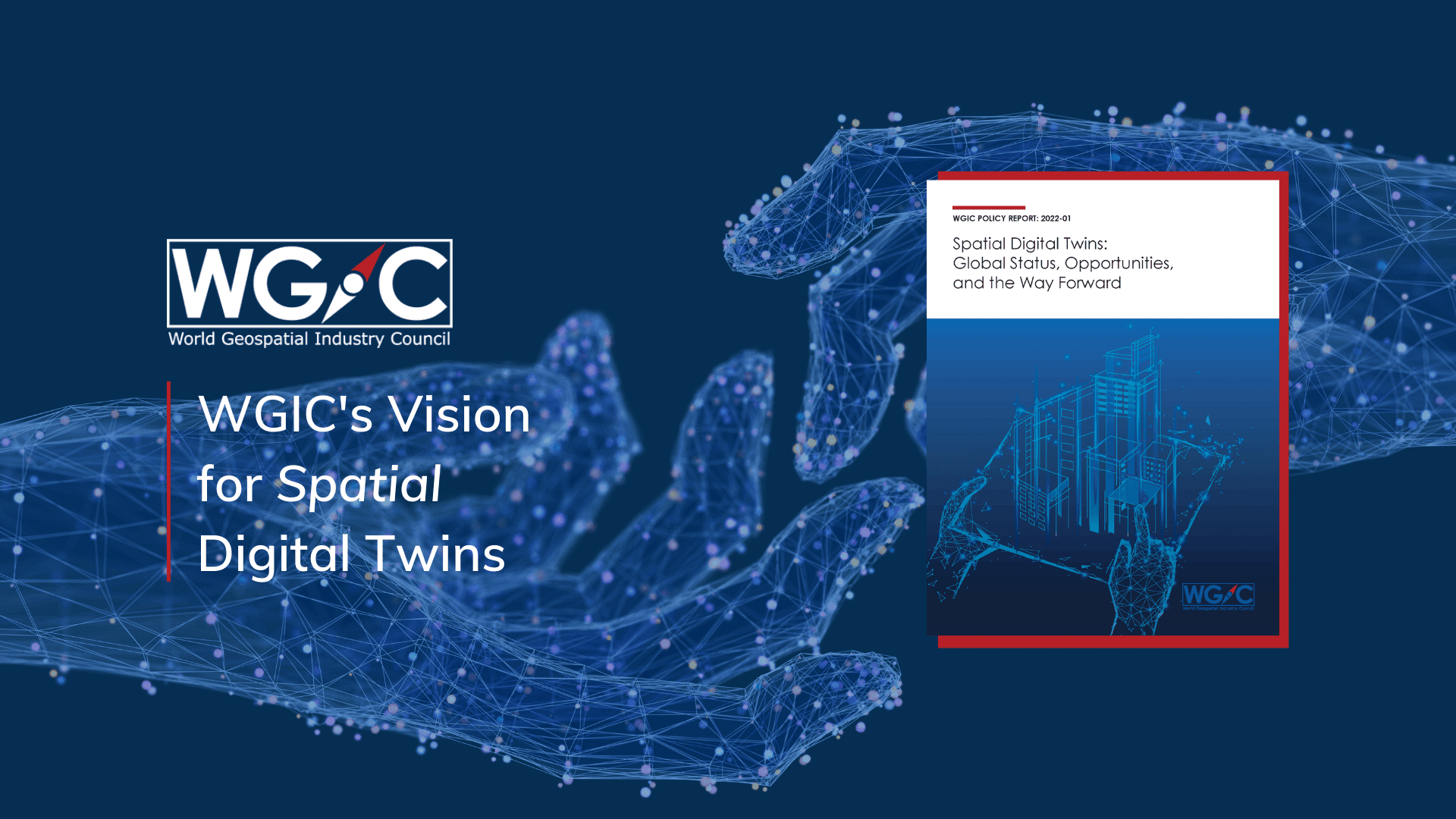In an earlier blog, we presented the definition and benefits of digital twin technology and the role of geospatial data in unlocking new opportunities. This blog will cover WGIC’s vision of digital twin technology as presented in the report “Spatial Digital Twins: Global Status, Opportunities, and the Way Forward.”
Spatial digital twin technology is the driving force for digital transformation across many industries. United Nations with its Digital Twins of the Ocean (DITTO) and the European Union with its DestineE, along with countries such as the United Kingdom, Germany, Singapore, and New Zealand, are heavily investing in spatial digital twin programs.
As part of our research, we considered the data published by Juniper Research and MarketsandMarkets. We have identified that in 2021, there was an estimated USD$12.7B revenue associated with Digital Twins, with an ~$8B Total Addressable Market for the Geospatial Industry. This is projected to rise to $45B by 2026, with ~$25B in Total Addressable Market for the Geospatial Industry.

Digital Twins Utilized Everywhere: What is needed to achieve it?
Digital twins are increasingly integrated into business processes and systems and will soon become part of daily life. However, WGIC identified five key aspects we need to address for this to happen.
1. Setting standards and definitions for current technologies to align and communicate with each other
WGIC’s conversations with subject-matter experts regarding the relevance and the value of standards revealed that four out of five agreed that there is a need for standards and definitions to be aligned for the spatial digital twins to mature.
2. The availability/existence of technological capability or capacity to develop digital twins across all voxels
For the integration of digital twins, there should be a proper technological framework available. Examples come to prove their existence. For illustration purposes, WGIC designed the requisite technology stack as depicted in the graphic below.

Currently, well-defined programs are implementing spatial digital twins at city, municipality, country, and global levels. The Digital Twin Victoria initiative in Australia, the Wellington Digital Twin program in New Zealand, and the Smart Nation Initiative of Singapore are just a few examples. The list extends to other countries and international organizations like the United Nations.
3. Use cases to solve organizational problems or demonstrate public benefit
In terms of use cases, WGIC observes good alignment. The application of digital twins can be seen in many industries, utilities, healthcare, manufacturing, disaster management, and smart cities, to name a few. They are particularly beneficial for the predictive maintenance of manufacturing processes. Digital twins can predict potential equipment downtimes and prevent failure, thus improving efficiency and cutting down costs.
WGIC defines three use cases of spatial digital twins based on scale and cross-sectoral integration: micro, hybrid, and macro.

In terms of the opportunities in the geospatial sector, WGIC conducted an assessment to understand where there will be high utilization of spatial data and technologies in digital twin use cases and figured out the following three key categories:
- Advanced use cases
- Potential spatial digital twin candidates
- and Generic digital twins
Advanced use cases include metaverse, construction (asset visualization), and smart cities and infrastructures. Potential digital twin candidates include conservation and heritage, virus control and management, mining, and many more. In generic digital twins, WGIC doesn’t see a specific need for enabling spatial components to bring uplift to these digital twins because they are primarily implemented in traditional manufacturing use cases. Other generic digital twins include the management of highly complex assets, traffic control, and healthcare applications.
4. Assess client needs as they drive the development of spatial digital twins
The industry needs to work with the clients to understand the business challenges of the organization’s needs and only move toward assessing whether there is a need for spatial digital twin implementation and then only move towards implementing spatial digital twins.
Conclusion
Digital twin technology incorporates many things that seemed futuristic previously but are already implemented or are in the process of implementation. Considering the pace of development of digital twin technology, the growing importance of the spatial component and its features, WGIC sees its future based on the following three key aspects:
- Constant real-time updates
- Adaptability and connectivity
- Accessibility

Interconnectedness is a big part of WGIC’s vision of Spatial Digital Twins. It will enable new opportunities for many industries to increase revenue and advance efficiency. Eventually, it will benefit not only the owners but also countries, regions, and humanity. However, we can now observe examples of applications across micro, hybrid or regional, and macro scales occurring independently. These digital twins have been aggregated in isolated use cases. It limited their access and availability to others, thus slowing down the pace of positive change.
The original content of the blog post is sourced from the WGIC Policy Report “Spatial Digital Twins: Global Status, Opportunities, and the Way Forward”
Editors of the blog: Margarita Dadyan and Bhanu Rekha from WGIC



